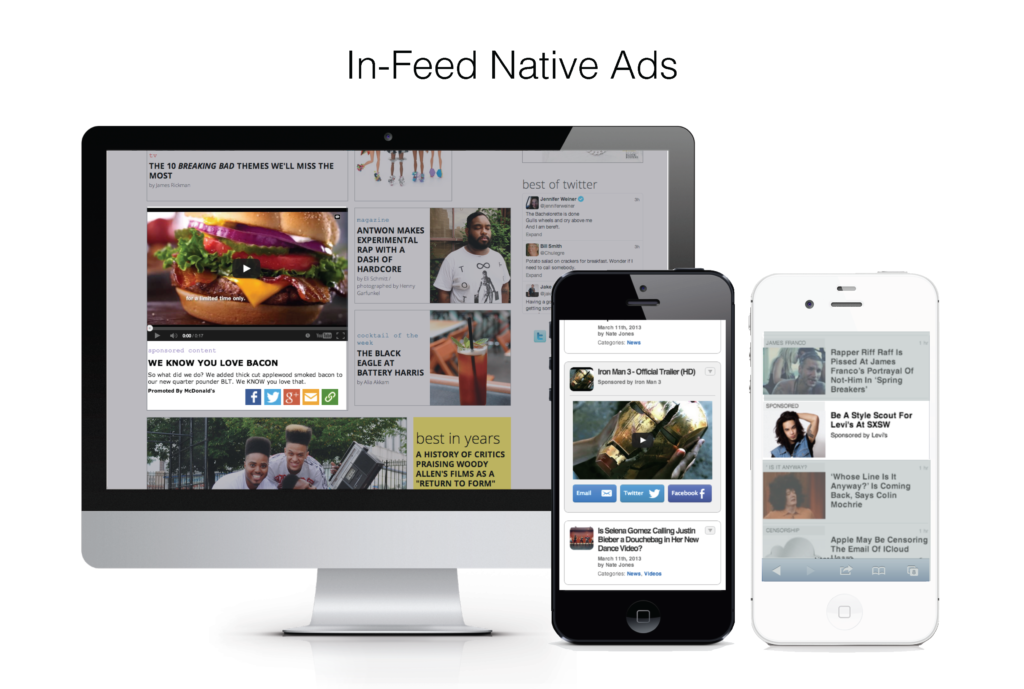
If you’ve been a long-time reader of our blog, you already know we are not huge fans of native advertising. And when the fake news uproar started, it became obvious that there really wasn’t much difference between the two.
“I can only laugh when publishers bemoan the growth of fake news and then in the same breath gush about how native advertising is the future of digital media,” wrote Jim Weber on LinkedIn back in early 2017.
We understood how it happened. Publishers, frantic to find a new business model that could make hay with their online real estate, looked hopefully to native advertising and sponsored content to drive revenue through their digital channels.
They banked on it so much that major media brands launched native ad studios to help the process along. The idea has had its critic; in fact many said 2016 was the year native ads either made it, or didn’t. The problem? Too many people didn’t realize that the content was paid. Too many people didn’t realize that is wasn’t real journalism…aka fake news.
The National Advertising Division of the BBB went so far as to file a complaint against American Media, Inc. for their native ad campaigns for Slimfast. Industry experts were warning against the idea as far back as 2014, and I wrote in late 2016 that fake news was helping kill off any remaining enthusiasm for native ads.
We were right; as Nicole Levy reports in Folio:, native ad demand declined steadily from early 2016 to mid-2017, and demand has stayed flat since.
“According to the ad insight firm, only 11 percent of online advertisers use native formats now and those brands run them across only 10 percent of the sites on which they advertise,” Levy writes, then asks, “What does this portend for the future of native?”
In a word, it’s “custom.”
“I think the narrative around ‘native’ is moving to ‘custom,’” said Forbes chief sales officer Jessica Sibley. Forbes, you may recall, was in the vanguard of native advertising – and many saw them as oozing over the sacrosanct line in a way that tarnished their pristine brand. But they are changing the narrative – and the reality – of native content.
As Levy explains, “The global business-focused media company she works for—which launched its online platform BrandVoice in 2010 and has worked with more than 230 advertisers since—has added to one-off posts on Forbes.com what Sibley describes as ‘different kinds of capabilities that exemplify and bring to light [the concept of] custom.’ Those include the company’s Insights research products for businesses, their live events and self-contained microsites like KPMG’s The Great Rewrite series, one of Outbrain’s top seven examples of native advertising in 2018.”
In other words, it’s less about ads disguised as content, and more about custom content that readers truly want to engage with.
It’s a sea change on some levels, and it speaks to publishers realizing that the integrity of their brand is worth far more than the revenue stream they stood to gain by offering up native ad space. And as brand publishing continues to raise the bar and bring in excellent ROI, there’s a new model to emulate.
“Everyone we spoke to expressed optimism about the future of custom content and its potential for growth at their respective companies,” Levy notes. “Whatever its name, ‘custom,’ ‘branded’ or ‘native, the product’s appeal for advertisers remains the same: tapping into publishers’ knowledge of what drives reader engagement and the ability to filter messaging through their brands’ unique lens.”
Instead of clawing their way to digital revenue through sketchy native ad tactics, publishers and advertisers today are working in partnership to create some great custom editorial content that resonates well with their readers.
“According to a 2017 Time Inc. study, two out of three Generation Z, Millennials and Generation X consumers trust custom content more than traditional advertising,” Levy writes. “About 90 percent of survey respondents said they liked the idea of custom content as a way for brands to connect with them, and 89 percent said they believed it was a good way for advertisers to stand out among their competitors online.”
The key, as I’ve said so many times, is transparency. We are increasingly cognizant of where our news is coming from, on all channels. For brands, this means no more sacrificing reputation for eyeballs, and credibility for clicks. And that’s a good thing for everyone.
